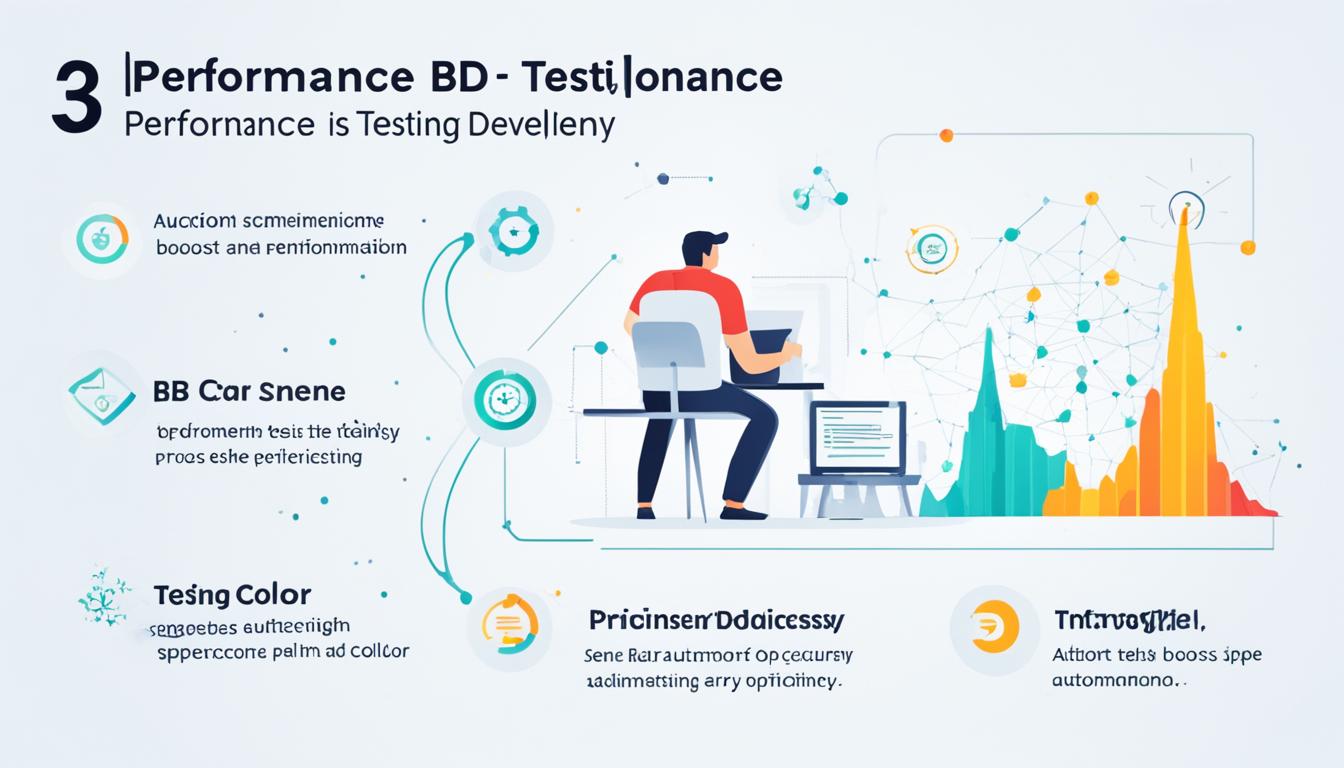At [Company Name], we understand the significance of risk management in software quality assurance (SQA). This comprehensive guide will help you navigate through the process of identifying, assessing, and mitigating risks to enhance the performance and success of your projects and business. By effectively managing risks, you can boost the credibility and effectiveness of your software, leading to increased customer satisfaction and overall positive results for your company.
Key Takeaways
- Risk management is crucial for successful software quality assurance.
- Effective risk management helps improve product/service quality and reduce negative impacts.
- Involving stakeholders and regularly updating risks are essential steps in risk management.
- Integrating risk management into the testing process ensures a smooth and successful development.
- Continuous improvement in risk management helps organizations stay ahead of evolving risks.
The Role of Risk Management in Quality Assurance
Risk management plays a crucial role in ensuring the quality and success of software development projects. It involves the identification, analysis, and assessment of potential risks that could impact the software’s reliability and performance. By effectively managing these risks, quality assurance (QA) teams can prioritize their testing efforts, develop mitigation strategies, and ensure comprehensive testing.
One of the key aspects of risk management in QA is the identification of potential risks. This involves actively looking for vulnerabilities and potential problems that might arise during the development and testing process. By identifying risks early on, QA teams can proactively address them and minimize their impact on the final product.
After identifying risks, the next step is to analyze their likelihood of occurrence and their potential impact. This risk analysis allows QA teams to prioritize their testing efforts and allocate resources accordingly. By focusing on high-risk areas, QA teams can ensure that critical functionalities are thoroughly tested and any potential issues are identified and addressed.
Risk assessment is another critical component of risk management in QA. This involves evaluating the significance of identified risks based on their probability and impact. By assessing the severity of each risk, QA teams can allocate appropriate resources and develop effective mitigation strategies. This step ensures that the most critical risks are addressed first, reducing the overall risk exposure of the software.
By effectively managing risks in QA, organizations can improve the quality and reliability of their software. This leads to enhanced customer satisfaction and reduced reputational damage caused by software failures or defects.
“Effective risk management in QA helps organizations identify and address potential pitfalls that could impact the software’s overall performance and reliability.”
Integrating risk management into the QA process is essential to ensure comprehensive testing. It allows for a systematic approach to identifying, analyzing, and mitigating risks throughout the entire development lifecycle. By considering potential risks from the early stages of testing, QA teams can proactively address any issues, minimizing the likelihood of project delays and software defects.
Furthermore, risk management in QA helps organizations minimize overlooked or inadequately addressed issues. By taking a holistic approach to risk identification and analysis, QA teams can uncover potential areas of improvement and address them before they become significant problems. This proactive approach improves the overall quality of the software and reduces the chances of critical issues going undetected.
To visually represent the role of risk management in quality assurance, here’s a table summarizing the key steps involved:
| Key Steps in Risk Management | Description |
|---|---|
| 1. Risk Identification | Identifying potential risks and vulnerabilities in the software. |
| 2. Risk Analysis | Assessing the likelihood and impact of identified risks. |
| 3. Risk Assessment | Evaluating the significance of risks based on their probability and impact. |
| 4. Risk Mitigation | Developing strategies to mitigate the identified risks. |
| 5. Systematic Testing | Ensuring comprehensive testing to identify and address risks. |
By following these key steps, organizations can effectively manage risks in QA and ensure the delivery of high-quality software products to their customers.
By incorporating risk management into the QA process, organizations can minimize the potential impact of risks on their software projects. This proactive approach enhances the overall quality and reliability of the software, leading to satisfied customers and a positive reputation in the industry.
Benefits of Risk Management in SQA
Incorporating risk management into software quality assurance (SQA) provides numerous benefits that contribute to the overall success of a project or business. By implementing effective risk mitigation strategies in software quality assurance, organizations can improve the quality of their products or services and ensure customer satisfaction.
“Risk management is an essential aspect of SQA that helps in identifying and mitigating potential risks that may impact the final outcome of a software project. It assists in minimizing project delays, software bugs, and budget overruns, reducing the overall impact of risks on the project. Ultimately, risk management ensures that organizations can meet customer needs and expectations, leading to enhanced product/service quality and a positive reputation.”
Risk monitoring in software testing is another critical component of risk management in SQA. By closely monitoring risks throughout the software development and testing process, organizations can proactively address any issues that may arise, minimizing the likelihood of overlooking or inadequately addressing critical risks.
Moreover, risk control is an integral part of risk management in SQA. It involves implementing measures and strategies to control and mitigate the identified risks effectively. By exercising risk control in SQA, organizations can significantly reduce the negative impact of risks on the project and ensure its smooth progression.
Overall, by incorporating risk management into SQA, organizations can improve product/service quality, reduce the impact of risks, minimize overlooked issues, and ultimately meet customer needs and expectations.
| Benefits of Risk Management in SQA |
|---|
| Improved product/service quality |
| Minimized project delays |
| Reduced software bugs |
| Optimized budget utilization |
| Effectively addressed critical risks |
| Enhanced customer satisfaction |
| Positive reputation |
Key Steps in Risk Management
The process of risk management in software quality assurance (SQA) involves several key steps that ensure effective risk mitigation and prioritization. By following these steps, organizations can minimize the impact of potential risks on their projects. Let’s explore the key steps:
-
Identify Risks
Risks must be identified and documented before they can be effectively managed. This can be done through techniques such as brainstorming sessions, expert opinions, and analyzing historical data. By creating a comprehensive list of risks, we can understand potential threats to the project.
-
Analyze and Prioritize Risks
Once risks are identified, they need to be analyzed and prioritized based on their probability and impact. This analysis helps us understand the likelihood of risks occurring and their potential consequences on the project. By prioritizing risks, we can allocate resources and develop targeted mitigation strategies.
-
Develop a Risk Management Plan
A risk management plan outlines how risks will be mitigated and controlled throughout the project. It includes specific actions, responsibilities, and timelines for implementing mitigation strategies. By having a well-defined plan, we can proactively address potential risks and minimize their impact on the project.
-
Implement Mitigation Strategies
After identifying and prioritizing risks, it’s crucial to develop and implement mitigation strategies. These strategies aim to minimize the probability and impact of risks on the project. They can include preventive actions, contingency plans, and risk transfer or acceptance approaches. By implementing these strategies, we can effectively manage risks and ensure project success.
-
Continuously Monitor and Review Risks
Risk management is an ongoing process that requires continuous monitoring and review. Risks can evolve over time, and new risks may emerge during the project lifecycle. By consistently monitoring and reviewing risks, we can adapt our mitigation strategies and address any new or changing threats.
-
Integrate Risk Management into Project Activities
Risk management should be integrated into all project activities to ensure comprehensive coverage. It should be an integral part of project planning, execution, and monitoring. By embedding risk management into project activities, we can proactively address risks and prevent any negative impact on the project’s objectives.
By following these key steps, organizations can develop a robust risk management plan in software quality assurance and prioritize risks effectively. This approach enables proactive risk mitigation, enhancing project success and software quality.
Image:
Involving Stakeholders in Risk Management
In order to ensure successful risk management in SQA, it is crucial to involve stakeholders throughout the process. By engaging stakeholders and seeking their input, organizations can create a comprehensive risk list and effectively control risks. The active participation of stakeholders brings diverse perspectives to the table and helps in identifying risks that may have been overlooked.
When involving stakeholders in risk management, it is important to consider their different viewpoints and expertise. By collaborating and making informed decisions together, organizations can mitigate risks more effectively and make risk management a collective effort.
“Involving stakeholders in risk management fosters a sense of ownership and accountability. By working together, we can ensure that potential risks are identified and addressed, reducing the likelihood of negative impacts on the project or business.”
Stakeholders can provide valuable insights and bring unique knowledge that contributes to a more comprehensive understanding of the project’s risks. This inclusive approach helps in aligning risk management strategies with the overall objectives of the organization.
Furthermore, involving stakeholders in risk management enhances transparency and communication. It allows for open discussions about potential risks, their likelihood, and their potential impact. This transparent approach helps in building trust among stakeholders and ensures that everyone is on the same page when it comes to risk management decisions.
In summary, involving stakeholders in risk management is essential for successful risk management in SQA. By leveraging the collective expertise and perspectives of stakeholders, organizations can create a more comprehensive risk management plan, effectively control risks, and enhance overall project outcomes.
Benefits of Involving Stakeholders in Risk Management:
- Comprehensive risk identification and analysis
- Diverse perspectives and expertise
- Better alignment with organizational objectives
- Enhanced transparency and communication
- Ownership and accountability

| Benefits | Description |
|---|---|
| Comprehensive risk identification and analysis | Involving stakeholders ensures a broader understanding of potential risks, allowing for a more comprehensive risk identification and analysis process. |
| Diverse perspectives and expertise | Stakeholders bring unique insights and knowledge to the table, facilitating a more holistic approach to risk management. |
| Better alignment with organizational objectives | By involving stakeholders, risk management strategies can be better aligned with the overall objectives and priorities of the organization. |
| Enhanced transparency and communication | Involving stakeholders promotes open discussions and transparent communication about risks, facilitating better risk management decisions. |
| Ownership and accountability | When stakeholders are involved in risk management, they develop a sense of ownership and accountability, leading to more proactive risk mitigation efforts. |
Regularly Updating Risks
In order to effectively manage risks in software quality assurance (SQA), it is crucial to regularly assess and update the list of potential risks. Risks can evolve and change over time due to various factors such as market dynamics, technological advancements, and shifting customer needs. By staying proactive and continuously updating risks, organizations can ensure they are prepared to address emerging threats and maximize their risk management efforts.
Regularly updating risks allows organizations to:
- Stay ahead of potential threats in the rapidly changing business landscape
- Address new risks that may arise as a result of technological advancements
- Adapt to shifting customer needs and preferences
By keeping the risk list up to date, organizations can prioritize resources and allocate them effectively to manage and mitigate risks that may have a significant impact on the software quality and overall project success.
| Benefits of Regularly Updating Risks | Actions |
|---|---|
| Staying Proactive | Regularly assessing and updating the risk list helps organizations stay ahead of potential threats and respond in a timely manner. |
| Maximizing Risk Management Efforts | By continuously updating risks, organizations can ensure that their risk mitigation strategies are effective and aligned with the current landscape. |
| Fostering Continuous Improvement | Regularly updating risks promotes a culture of continuous improvement in risk management practices, allowing organizations to learn from past experiences and enhance their risk management capabilities. |
“Regularly updating risks helps us stay proactive, adapt to changes, and maximize our risk management efforts. By continuously assessing and updating our risk list, we can effectively mitigate potential threats and ensure the success of our software quality assurance process.
Integrating Risk Management into the Testing Process
To ensure effective risk management in software quality assurance (SQA), it is crucial to integrate risk management into the testing process. By making risk management a priority from the early stages of testing, we can identify and address risks more efficiently. This integration helps us avoid surprises, minimize the likelihood of project derailment, and ensure a smooth and successful testing process.
Integrating risk management in QA testing allows us to take proactive measures to mitigate potential risks that could impact the quality and reliability of our software. By considering risks during the planning and design phases of testing, we can develop appropriate testing strategies and allocate resources effectively.
“Risk management should not be an afterthought in QA testing; it should be woven into the fabric of the entire process.”
Identifying and Assessing Risks
During the test planning phase, we actively identify potential risks and assess their impact on the testing process. By understanding the potential risks, we can prioritize testing efforts and allocate resources accordingly. This step involves examining factors like schedule constraints, resource limitations, and the complexity of the software under test.
Developing Mitigation Strategies
Once risks are identified and assessed, we develop mitigation strategies to proactively address them. These strategies could include implementing additional test cases, adjusting testing priorities, or allocating more resources to high-risk areas. By having predefined mitigation strategies in place, we can minimize the impact of potential risks and ensure effective risk control.
Regular Risk Monitoring
Risk monitoring is an ongoing process that requires continuous vigilance. We regularly monitor and track identified risks throughout the testing lifecycle. This helps us stay updated on the status of risks, identify any emerging risks, and take appropriate actions to mitigate them. Regular risk monitoring enhances our ability to promptly respond to potential issues and maintain a proactive risk management approach.
To illustrate the importance of integrating risk management into the testing process, consider the example below:
| Without Risk Management Integration | With Risk Management Integration |
|---|---|
| Testing is conducted without considering potential risks. | Risks are identified and addressed before and during the testing process. |
| Testing efforts may be focused on areas with lower risk, resulting in potential critical issues being missed. | Testing efforts are prioritized based on the identified risks, ensuring critical areas are thoroughly tested. |
| Issues are discovered during testing, causing delays and additional costs. | Proactive risk management minimizes the likelihood of unexpected issues, reducing project delays and costs. |
| The final product may have undetected defects or vulnerabilities. | The final product is more robust and reliable due to thorough risk management and testing. |
By integrating risk management into the testing process, we ensure that potential risks are identified, assessed, and addressed in a systematic and proactive manner. This enables us to deliver high-quality software that meets customer expectations and minimizes the likelihood of adverse impacts on the project’s success.
Continuous Improvement in Risk Management
In the dynamic landscape of software development, risk management is an ongoing process that necessitates continuous evaluation and improvement. At our organization, we understand the significance of continually enhancing our risk management strategies to adapt to evolving risks and maintain an effective approach. By regularly reviewing and reflecting on our risk management process, we identify areas where we can make improvements and implement changes to strengthen our risk management efforts.
Continuous improvement is crucial to ensuring that our organization stays proactive and prepared when it comes to managing risks.
One way we achieve continuous improvement is by leveraging the expertise and feedback of our stakeholders. Their insights and perspectives provide valuable input and enable us to consider different viewpoints to identify risks that we might have overlooked. By involving stakeholders, we ensure a comprehensive risk list and enhance our ability to control and mitigate risks effectively.
We value collaboration and engagement with our stakeholders to foster a robust risk management culture that prioritizes transparency and inclusivity.
Additionally, we embrace a culture of learning and consistently seek opportunities to enhance our risk management capabilities. By leveraging industry best practices and staying updated with emerging trends and technologies, we proactively adapt our risk management approach to address new and complex risks that may arise.
Continuous learning and improvement empower us to navigate uncertainty and make informed decisions in risk management.
Our organization also emphasizes the importance of regularly assessing and updating our risk registers. Risks can evolve over time due to various factors such as market dynamics, technological advancements, or changing customer needs. By regularly evaluating and revisiting our risk registers, we ensure that our risk management strategies align with the current risk landscape. This proactive approach enables us to promptly identify emerging risks and develop effective mitigation strategies.
We recognize the ever-changing nature of risks and strive to stay one step ahead by maintaining a constant focus on risk evaluation and treatment.
To measure the effectiveness of our risk management efforts, we establish clear key performance indicators (KPIs) and regularly monitor our progress. By tracking our risk management KPIs, we gain valuable insights into the effectiveness of our strategies, identify any areas for improvement, and make data-driven decisions to enhance our risk management methods.
Continuous monitoring allows us to identify trends and patterns, make informed adjustments, and ensure our risk management approach remains effective.
| Benefits of Continuous Improvement in Risk Management | Examples |
|---|---|
| Enhanced risk identification | Identifying previously overlooked risks through comprehensive stakeholder involvement. |
| Improved risk mitigation strategies | Developing more efficient mitigation strategies based on lessons learned from past experiences. |
| Increased resilience to emerging risks | Anticipating and proactively addressing emerging risks by constantly updating risk registers. |
| Optimized decision-making | Making informed decisions by regularly monitoring risk management KPIs and adjusting strategies accordingly. |
By prioritizing continuous improvement in risk management, our organization strives to enhance our abilities in identifying, assessing, and mitigating potential risks effectively. We believe that with a proactive and iterative approach to risk management, we can stay one step ahead and achieve better outcomes for our projects, stakeholders, and clients.
Conclusion
Risk management is a critical aspect of software quality assurance that directly impacts the success of a project or business. By diligently applying risk evaluation, risk treatment, and risk monitoring strategies, organizations can mitigate potential risks, improve product/service quality, and meet customer needs and expectations. We have explored the key steps in risk management, the role of stakeholders, the importance of regular risk updates, and the integration of risk management into the testing process. By continuously improving our risk management approach, we can elevate our software’s reliability and performance, ensuring overall success.

Key Takeaways
- Risk management in software quality assurance is crucial for project and business success.
- Identifying, assessing, and mitigating risks improve product/service quality and customer satisfaction.
- Following key steps, involving stakeholders, and regularly updating risks are essential in the risk management process.
- Integrating risk management into the testing process helps avoid surprises and project derailment.
- Continuous improvement ensures staying updated with evolving risks and maintaining an effective risk management approach.
| Key Actions | Benefits |
|---|---|
| Evaluate and prioritize potential risks | Focus resources on high-impact risks |
| Develop mitigation strategies | Reduce the impact of risks on the project |
| Involve stakeholders | Gain comprehensive risk perspectives |
| Regularly update risks | Proactively manage emerging threats |
| Integrate risk management into the testing process | Avoid surprises and ensure a smooth testing process |
Additional Skills to Enhance Risk Management in SQA
Besides technical knowledge, developing certain additional skills can greatly enhance risk management in SQA. Critical thinking is a crucial skill that enables professionals to identify and analyze risks effectively. By applying critical thinking, we can assess potential risks, evaluate their likelihood and impact, and make informed decisions about risk mitigation strategies.
Soft skills such as effective communication and collaboration are also invaluable in risk management. SQA professionals must be able to engage with stakeholders, clearly communicate risks, and transparently discuss mitigation strategies. By honing these soft skills, we can foster a collaborative risk management environment, ensuring that all relevant parties are involved and informed throughout the risk management process.
Effective risk communication is key to mitigating risks in SQA. Clear and concise communication helps stakeholders understand the potential risks, their impacts, and the strategies in place to address them. It builds trust, promotes engagement, and creates a shared understanding of the risks involved, enabling a more proactive and coordinated risk response.
By expanding our skill set to include critical thinking, soft skills, and effective risk communication, we can strengthen our risk management capabilities and drive successful outcomes in SQA projects. These additional skills not only complement our technical expertise but also empower us to navigate the complexities of risk management more effectively, ensuring the reliability and performance of our software.
Key Skills for Enhanced Risk Management in SQA:
- Critical thinking: An analytical and logical approach to identify, assess, and analyze risks.
- Soft skills: Effective communication, collaboration, and stakeholder engagement.
- Risk communication: Clear and transparent communication of risks and mitigation strategies.
By incorporating these skills into our risk management practices, we can create a robust and proactive risk management framework that minimizes uncertainties, enhances project outcomes, and drives success in SQA.
Explore Our Expert Guide on Risk Management in SQA
Are you looking to enhance your risk management skills in software quality assurance (SQA)? Look no further! Our expert guide on risk management in SQA provides comprehensive information, strategies, and tips to help you navigate the complexities of risk management and achieve success in your SQA process.
With our guide, you’ll gain valuable insights into identifying, assessing, and mitigating risks in SQA. Whether you’re a seasoned professional or just starting your SQA journey, our expert guide equips you with the knowledge and tools to master risk management and elevate the reliability and performance of your software.
From understanding the role of risk management in quality assurance to integrating risk management into the testing process, our guide covers all the essential aspects of effective risk management. You’ll also learn how to involve stakeholders, regularly update risks, and continuously improve your risk management approach. With our expert guidance, you can confidently navigate the challenges of risk management and achieve your desired outcomes.
FAQ
What is risk management in software quality assurance (SQA)?
Risk management in SQA involves identifying, assessing, and mitigating potential risks that could impact the quality and success of a software project or business.
Why is risk management important in quality assurance?
Risk management in quality assurance helps prioritize testing efforts, develop mitigation strategies, and ensure systematic and comprehensive testing to improve product or service quality.
What are the benefits of risk management in SQA?
Risk management improves product/service quality, reduces project delays and software bugs, minimizes overlooked issues, and enhances customer satisfaction and reputation.
What are the key steps in risk management?
The key steps in risk management include risk identification, risk analysis, risk mitigation, and ensuring systematic and comprehensive testing.
Why is involving stakeholders important in risk management?
Involving stakeholders helps in identifying overlooked risks, considering different perspectives, and making informed risk management decisions.
Why is it important to regularly update risks?
Regularly updating risks helps proactively manage potential threats, address emerging risks, and maintain an effective risk management approach.
How can risk management be integrated into the testing process?
Integrating risk management from the early stages of testing helps identify and address risks efficiently, avoiding project derailment and ensuring a successful testing process.
How can continuous improvement enhance risk management?
Continuous improvement allows organizations to identify areas for improvement in the risk management process and implement changes to stay updated with evolving risks.
What skills can enhance risk management in SQA?
Critical thinking, effective communication, and collaboration are additional skills that can enhance risk management capabilities in SQA.
Where can I find more information on risk management in SQA?
Explore our expert guide on risk management in SQA to learn comprehensive information, strategies, and tips to master risk management and elevate software reliability and performance.









